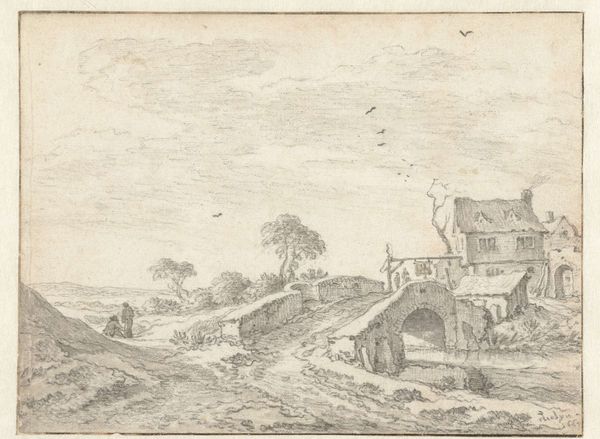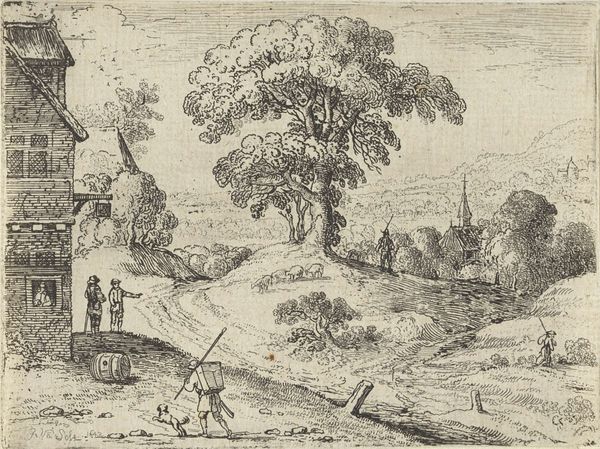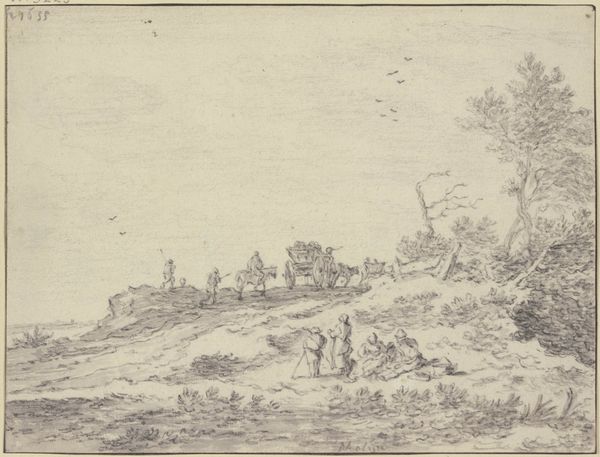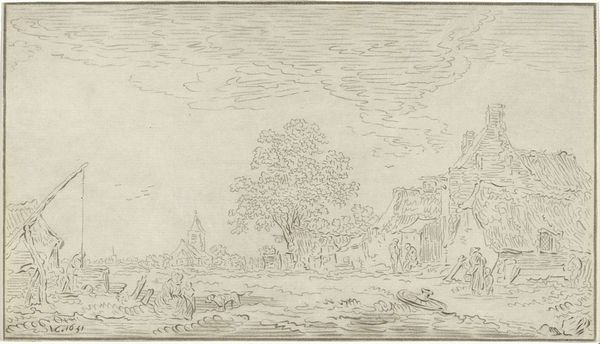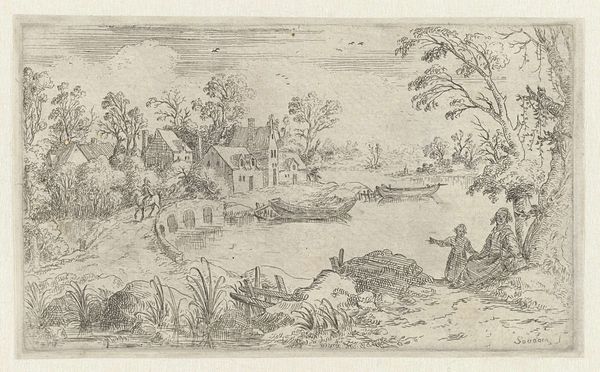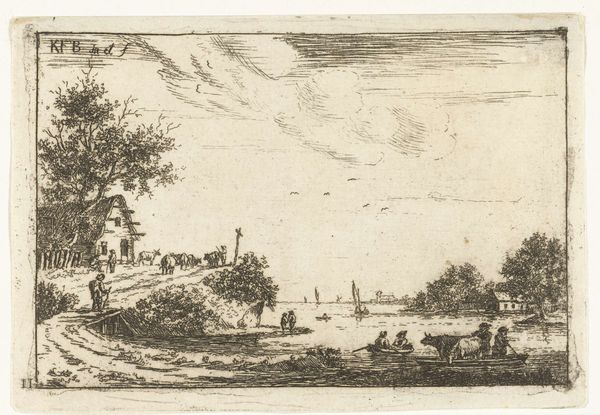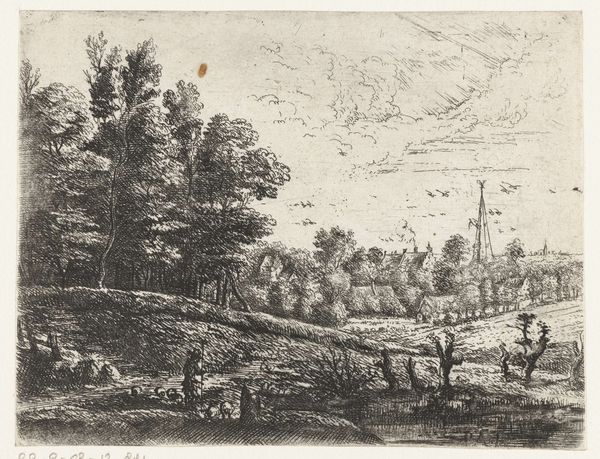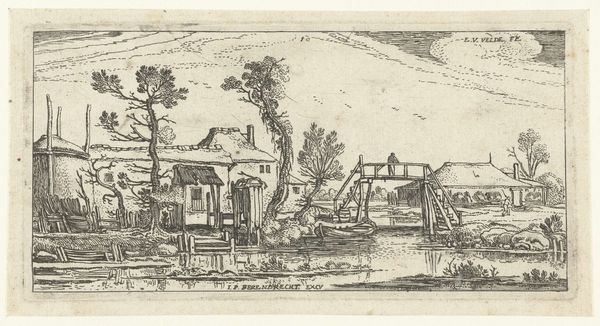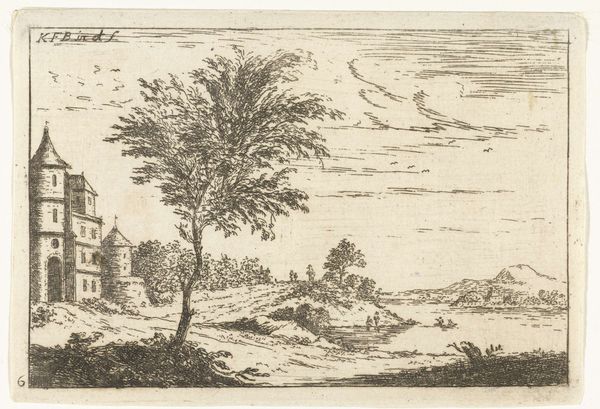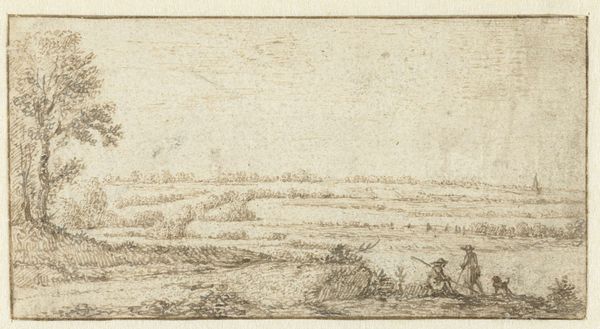
drawing, etching, paper, ink
#
drawing
#
quirky sketch
#
dutch-golden-age
#
mechanical pen drawing
#
pen illustration
#
pen sketch
#
etching
#
old engraving style
#
landscape
#
paper
#
personal sketchbook
#
ink
#
pen-ink sketch
#
pen work
#
sketchbook drawing
#
sketchbook art
Dimensions: height 69 mm, width 102 mm
Copyright: Rijks Museum: Open Domain
Editor: Here we have "Path along a Farm" created around 1615 by Esaias van de Velde, a drawing using ink on paper. The scratchy, almost hasty lines give it a casual, off-the-cuff feeling. What catches your eye when you look at it? Curator: What strikes me is the emphasis on the material reality of the Dutch landscape and the labour interwoven within it. Notice the painstaking detail rendered with simple ink. It's not just a pretty picture. Editor: Right, not just idyllic scenery. How so? Curator: Look at the depiction of the road itself. The ruts, the wear, and the figures traversing it suggest the everyday toils and the circulation of goods of the early 17th century. What sort of material processes were required to get people and resources from place to place? How would this process be further advanced over the coming century? Editor: So you're saying that even this "sketch" speaks to broader material networks? The etching process, ink production, paper - and now you mention roads. Curator: Exactly! And what about the buildings, those humble farm structures? Van de Velde is not merely aestheticizing rural life, he's presenting evidence of production, resources, and, perhaps, the social stratification inherent in land ownership and agricultural labor. It encourages the viewer to consider the lived realities behind this supposedly quaint scene. Does seeing the sketch change how you interpret 'pastoral' artwork moving forward? Editor: Definitely. I hadn’t considered the economics embedded in those lines. Now I see Van de Velde's method is crucial to understanding the work’s cultural and historical context. It feels far from casual now. Curator: Precisely! And seeing that shift – from simply observing to deeply analyzing - is exactly what engaging with art, materialistically, is all about.
Comments
No comments
Be the first to comment and join the conversation on the ultimate creative platform.
